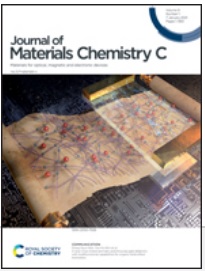The use of functional nanomaterials and their combination with organic polymers leads to the formation of advanced composites and hybrid inorganic–organic systems having unique properties. The use of such materials as anti-counterfeiting agents (invisible under ambient conditions) is crucial for modern security systems and for further identification of labelled items and documents in various industrial applications. Here, the fabrication of functional paper by in situ incorporation of luminescent cellulose fibres into its structure, during the formation of paper pulp, is shown. In order to produce luminescent fibres, an in situ modification is made during the spinning process, using lanthanide-doped upconverting nanoparticles (SrF2:Yb3+,Er3+). At first glance (in daylight), the functionalized paper cannot be distinguished from its unmodified form. However, when exposed to invisible near-infrared laser light (975 nm), bright green illumination appears. The modified paper preserves good mechanical durability, which is important for its potential for further processing in documents and other commercially available forms. Protecting documents and various materials with this kind of paper may open new horizons in materials engineering, forensics, and other industrial applications.

